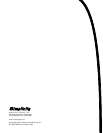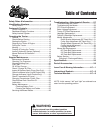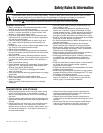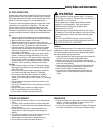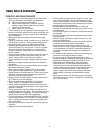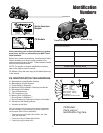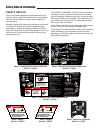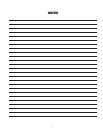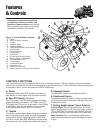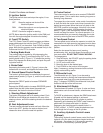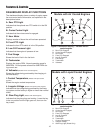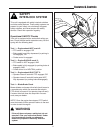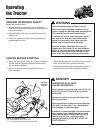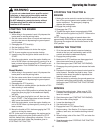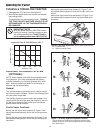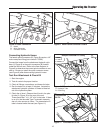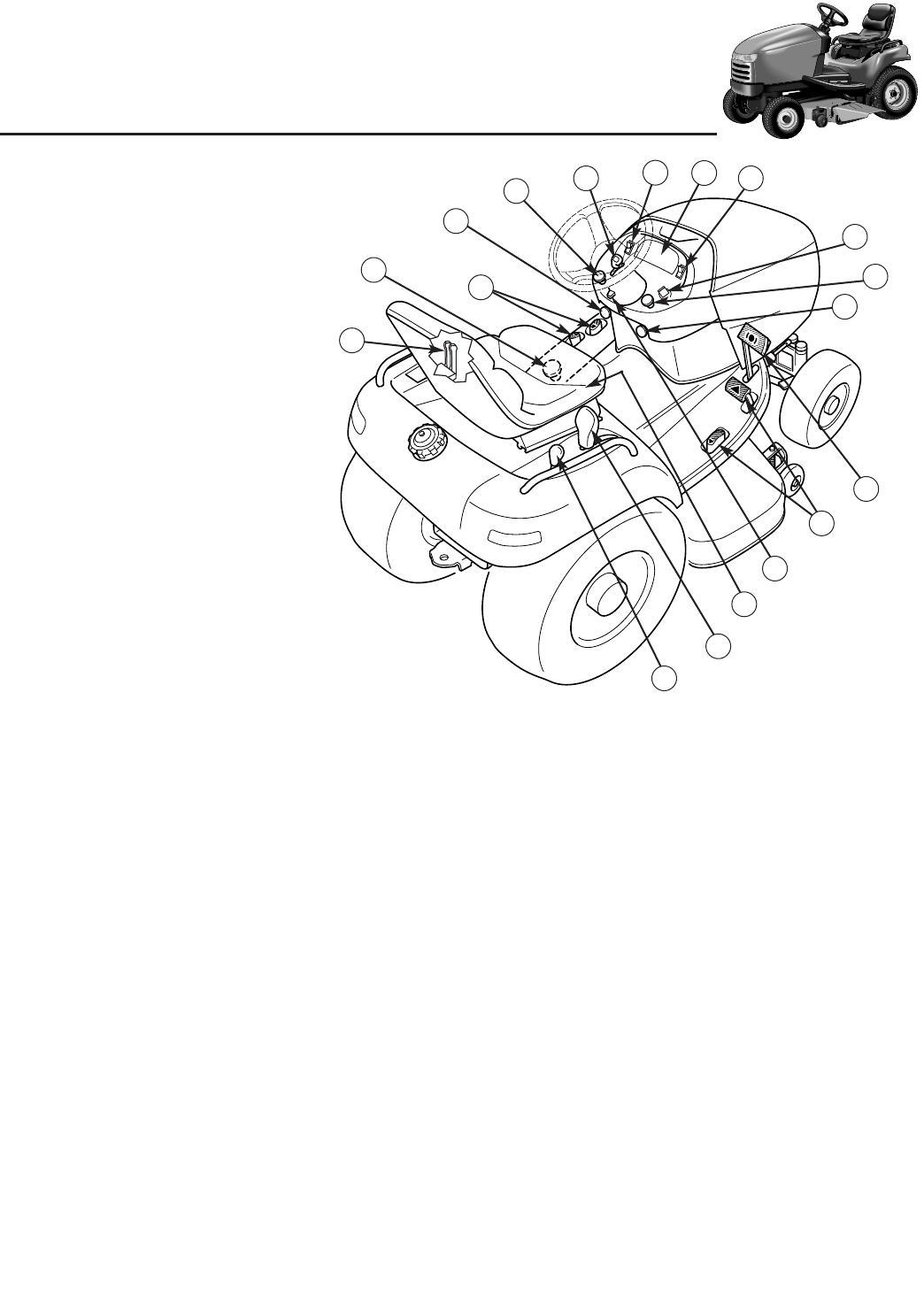
8
Features
& Controls
Figure 1. Tractor & Mower Controls
A. Choke
B. Rear PTO Switch (Optional)
C. Throttle
D. Headlight Switch
E. Dashboard Display
F. Cutting Height Adjust / Spout Rotation
G. Ignition Switch
H. Front PTO Switch
I. Parking Brake
J. Brake Pedal
K. Ground Speed Control Pedals
L. Steering Wheel Tilt Adjustment
M. Seat Adjustment Lever
N. Cruise Control
O. Two-Speed Control
P. Differential Lock
Q. Attachment Lift Pedals
R. Auxiliary Hydraulic Control Levers (Optional)
A. Choke
Pulling the choke control OUT engages the choke for
cold starting.
A warm engine may not require choking.
B. Rear PTO Switch
(Optional)
The PTO (Power Take-Off) switch engages and disen-
gages attachments that use the OPTIONAL rear PTO.
To engage the PTO, pull UP on the switch. Push DOWN
to disengage.
Note that the operator must be seated
firmly in the tractor seat for the PTO to function.
C. Throttle
The throttle controls engine speed. Move the throttle for-
ward to increase engine speed, and back to decrease
engine speed. Normal operating speed is 3600 RPM.
Do not run at less than 3000 RPM during normal opera-
tion. Always set to full throttle when using attachments.
D. Headlight Switch
The light switch turn the tractor lights on and off.
E. Dashboard Display
The dashboard display shows a variety of engine opera-
tion and control status information.
See page 8 for more
detailed information.
F. Cutting Height Adjust / Spout Rotation
Cutting Height: The cutting height switch control the
mower cutting height. To set the cutting height, push the
TOP or BOTTOM of the switch while observing the cut-
ting height indicator on the left side of the mower deck.
Spout Rotation: When a snowthrower attachment is
used, the switch rotates the spout (discharge chute) left
or right.
C
D
E
B
A
P
R
Q
F
J
K
M
L
G
H
I
N
O
CONTROL FUNCTIONS
The information below briefly describes the function of individual controls. Starting, stopping, driving, and mowing
require the combined use of several controls applied in specific sequences. To learn what combination and sequence
of controls to use for various tasks see the OPERATION section.
Please take a moment and familiarize
yourself with the name, location, and
function of these controls so that you will
better understand the safety and operating
instructions provided in this manual.



